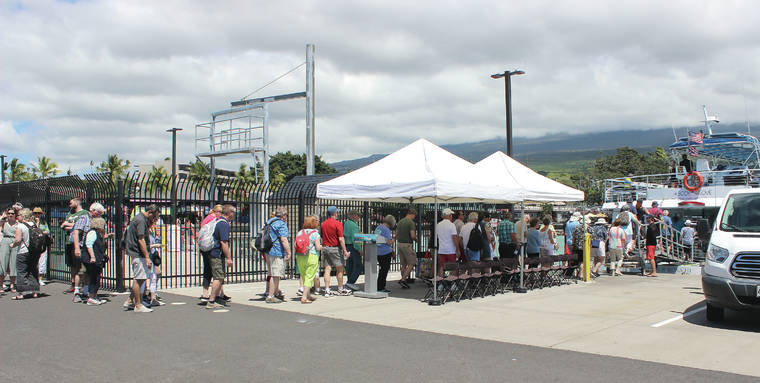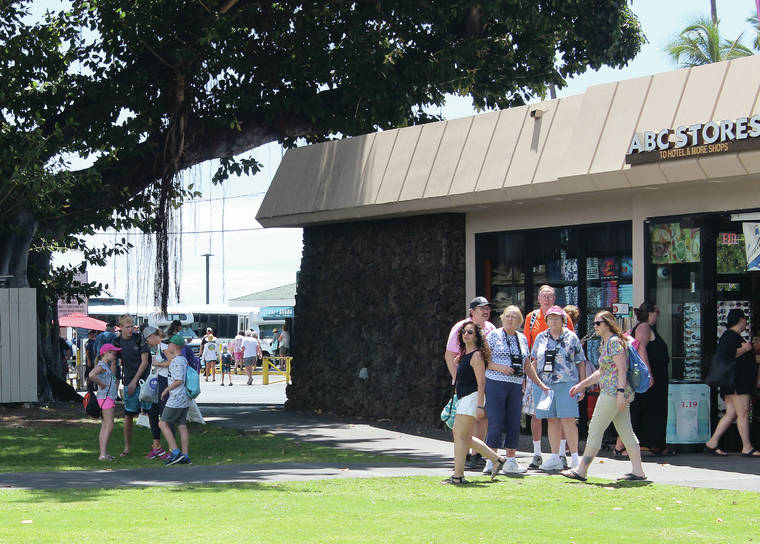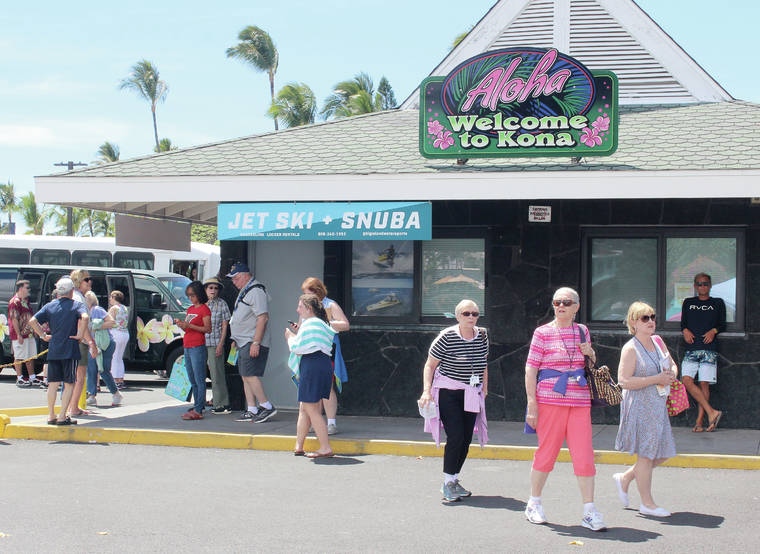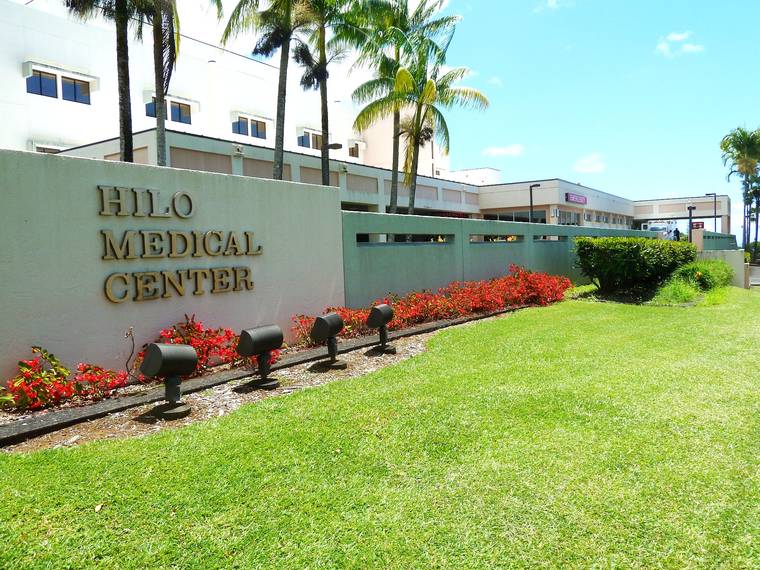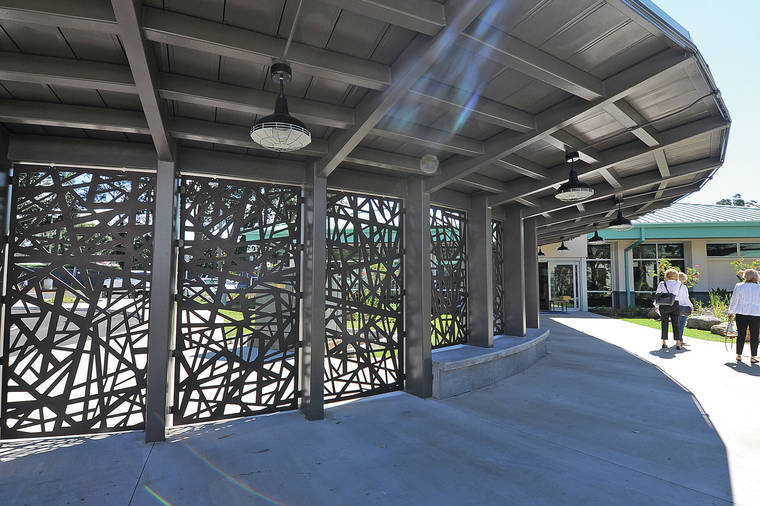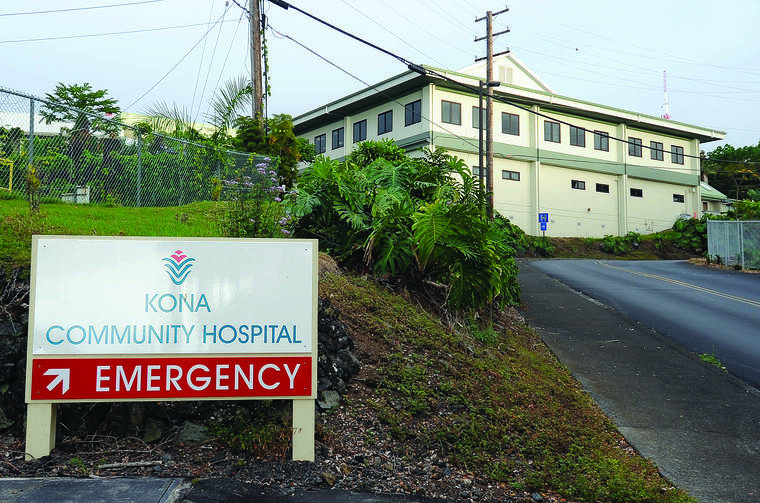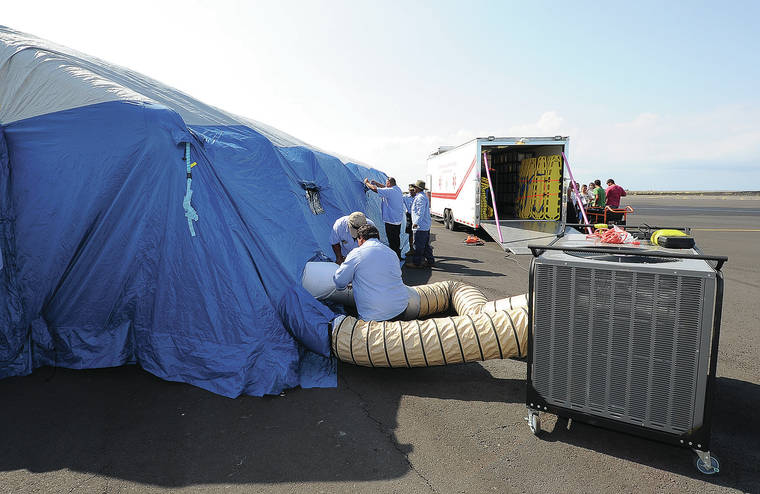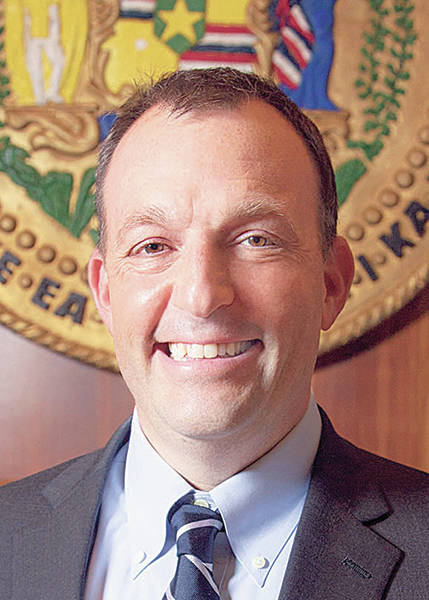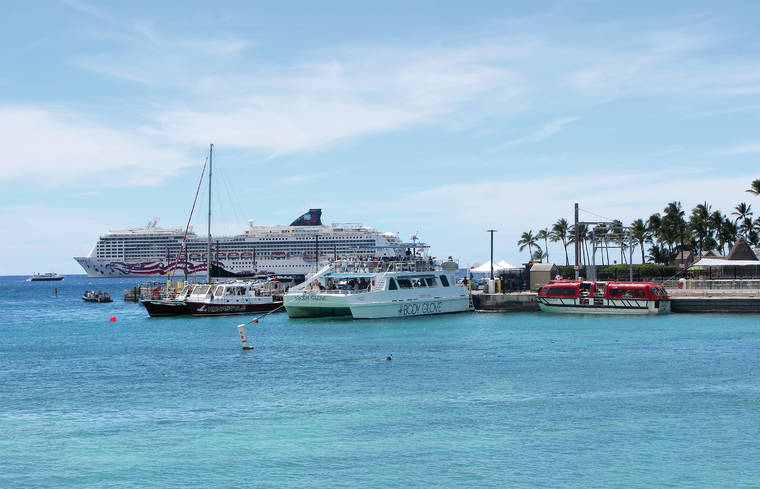While the decision to halt cruise ship visits is out of Lt. Gov. Josh Green’s hands, the West Hawaii doctor is worried that neighbor islands may not have the capacity to handle a surge of presumptive positive COVID-19 cases from a vessel making call.
“Cruise ships, obviously, have a lot of people concerned. I’m traveling statewide and hearing those concerns,” said Green, who represented West Hawaii in the state Senate from 2009 to 2018 and state House of Representatives from 2005 to 2009.
Two high profile quarantines — the Diamond Princess off Japan and the Grand Princess off California — have raised questions about cruise lines amid the coronavirus outbreak, particularly what cruise ships are doing to mitigate the risk of infection, the potential impact patients from a vessel could have on the ports they visit, and whether port calls should be paused.
On the Diamond Princess, which was quarantined for two weeks, there were more than 700 cases confirmed among the ship’s 3,700-plus passengers and crew. The Grand Princess, quarantined days after making call at four ports in Hawaii, including Hilo on Feb. 29, saw 21 cases of COVID-19 confirmed among its passengers and crew.
Last week, Green called on the federal government to “pause” all cruise ship travel to the U.S. for 60 days, telling Hawaii News Now the vessels “are essentially becoming the de facto cause of cases in the United States for some people and that’s not the brand they want.”
On Thursday, U.S. Rep. Tulsi Gabbard, who remains in the race for the Democratic presidential nomination, also pushed for a temporary suspension of “all service to prevent community spread for the foreseeable future” in a letter to President Donald J. Trump.
“We cannot afford to let cruise passengers risk infections in our country, causing mass exposures in our communities or risking another cruise ship being quarantined at sea,” Gabbard wrote.
Through the end of April, 17 cruise ship visits are planned for Kailua-Kona, following the cancellation of a visit in April by Princess Cruises on Thursday due to the outbreak. Six of the slated visits are by Norwegian Cruise Line’s Pride of America, which travels interisland, while others are coming from distant ports, including Seattle, San Diego, Vancouver, B.C., Canada, and Tahiti, according to Hawaii Port Call.
Green said he defers to the governor and federal government — the latter of which is the only entity that can order a pause to cruise lining — to make the decision. However, he is concerned about the neighbor islands and what could happen should a ship make port with presumptive positive COVID-19 cases.
“I’m just worried about the clinical impacts in case we were to see a bigger surge from cruise travelers at our hospitals,” said Green, whom Gov. David Ige named the state’s COVID-19 Healthcare Liaison.
That’s because neighbor islands, like the Big Island, may not have enough resources to handle a spike in patients, particularly those needing a bed in the intensive care unit.
“(ICU) beds in our regional hospitals, like Kona and Hilo, are somewhat limited, especially during the flu season and they are nonexistent in the critical access hospitals,” said Green.
Kona Community Hospital, Hilo Medical Center and North Hawaii Community Hospital are acute care hospitals with intensive care units. Critical care access hospitals on Hawaii Island include Ka‘u Hospital, Hale Hoola Hamakua in Honokaa and Kohala Hospital.
“We do have enough resources right now to manage our own health concerns, but if there’s a large surge, I would be worried that we couldn’t keep all of our people safe and alive,” Green said.
Green, providing a “ballpark” figure, estimated the number of ICU beds on Hawaii Island at somewhere between 25 and 40 with eight to 10 in Kona, 10 to 12 in Hilo and six to eight in North Hawaii.
But, they are not always open, ready and waiting for patients.
“With the need to care for everybody who already needs them for their cancers, their heart failures, renal failures and so on, there may only be, at any given time, a surge capacity of five to 10 beds,” he explained. “So, if we have 85 people infected, and they all got sick, we are in deep trouble. Or, if a cruise ship landed and we had — God help us — 200 people.”
West Hawaii Today reached spokespersons for the three facilities on the island with intensive care units for more details on beds and plans for handling a potential surge in patients.
Queen’s 35-bed North Hawaii Community Hospital in Waimea has a four-bed intensive care unit, according to spokeswoman Lynn Scully.
Kona Community Hospital, a Hawaii Health Systems Corporation facility in Kealakekua with 94 beds, has a nine-bed ICU and nine ventilators, according to spokeswoman Judy Donovan. She noted that while Kohala Hospital doesn’t have an ICU, it does have one ventilator available and the capacity to hold two COVID-19 positive patients.
Kona Community Hospital also has seven negative pressure rooms, which have ventilation systems that prevent contaminated air from escaping the room. Should the patient count requiring isolation top capacity at Kona Community Hospital, plans are in place to create a ward.
“We could slice one of the med-surg units and put all of the COVID patients on one side of it,” said Donovan, adding, “That’s how we would handle excess capacity above a seven-head count.”
For those not needing acute care, the hospital can overflow into an acute care module, which is essentially a field hospital.
“If we hit capacity and they’re not that acute, we do have the possibility to surge into our emergency management tent in the parking lot,” Donovan said. “It is like a MASH tent we could set that up in the parking lot, if we had to.”
Elena Cabatu, spokesperson for the HHSC East Hawaii Region, said Thursday afternoon that Hilo Medical Center has an 11-bed intensive care unit and 11 isolation rooms. They are also prepared for the potential of a surge in patients at facility that has 157 acute care beds and 35 long-term care beds.
“Preparations are underway,” Cabatu said. “We plan to set up an acute care module, if needed.”
If it gets worse, and the capacity to handle acute cases is maxed out, diversion of patients to other facilities (if room is available) would be considered.
“We would have to continually reassess our situation, dependent on patient acuity,” Donovan said. “For instance, how many patients are on ventilators? How serious is each patient? Based on that, if it got above our capacity to handle extremely acute patients, we will work with HHEM (Hawaii Healthcare Emergency Management) to find out, if we hit the limit, can we move them to another place and who has capacity at that point.”
All Big Island hospitals coordinate with the Healthcare Association of Hawaii, which operates the federally funded Hawaii Healthcare Emergency Management Program that manages statewide health care system emergency preparedness, mitigation, response operations and recovery for all hazard major emergencies, and disasters, according to its website.
In addition, the program is able to mobilize personnel to assist with a surge, move 20- and 50-bed field hospitals, and set up quarantine units throughout the state, among other abilities.
The program also maintains “caches” on each island with resources such as ventilators, pharmaceuticals, personal protective equipment, generators, emergency meals, voice and data communications, medical oxygen, HEPA scrubbers, chemical and radiological instruments and related equipment and supplies, according to its website.
President and CEO Hilton R. Raethel, MPH, MHA, was not available for comment Thursday.
“QNHCH is an active member of the Hawaii Healthcare Emergency Management and can reach out for support from the coalition as needed whether it be for supplies, additional beds through mobile hospital setup, transportation, or staffing,” Scully said, noting that staff at the Waimea facility is following Centers for Disease Control and Prevention protocols and “we are confident we can safely handle and treat patients who present with COVID-19.”
Though there may be a limited number of beds and ever-increasing concern over visiting cruise ships, particularly in the wake of the Feb. 29 visit by the Grand Princess to Hilo in which people potentially exposed to the novel coronavirus disembarked and visited areas in Hilo, Green urges the community not to get worked up or panic.
“Everyone should remain calm,” he said. “We have not had community transmission, yet. We’ve established a new capacity to do private testing through labs, so we will start getting a better idea of the total picture of COVID-19 in Hawaii.”
Green said he would be doing a statewide tour, which includes visiting the Big Island in the coming weeks, to ”make sure we have enough ER and intensive care unit capacity for all of our people.”
“If we don’t have enough, I’ll get us more,” Green said.
West Hawaii Today reporter/photographer Laura Ruminski contributed to this report.










